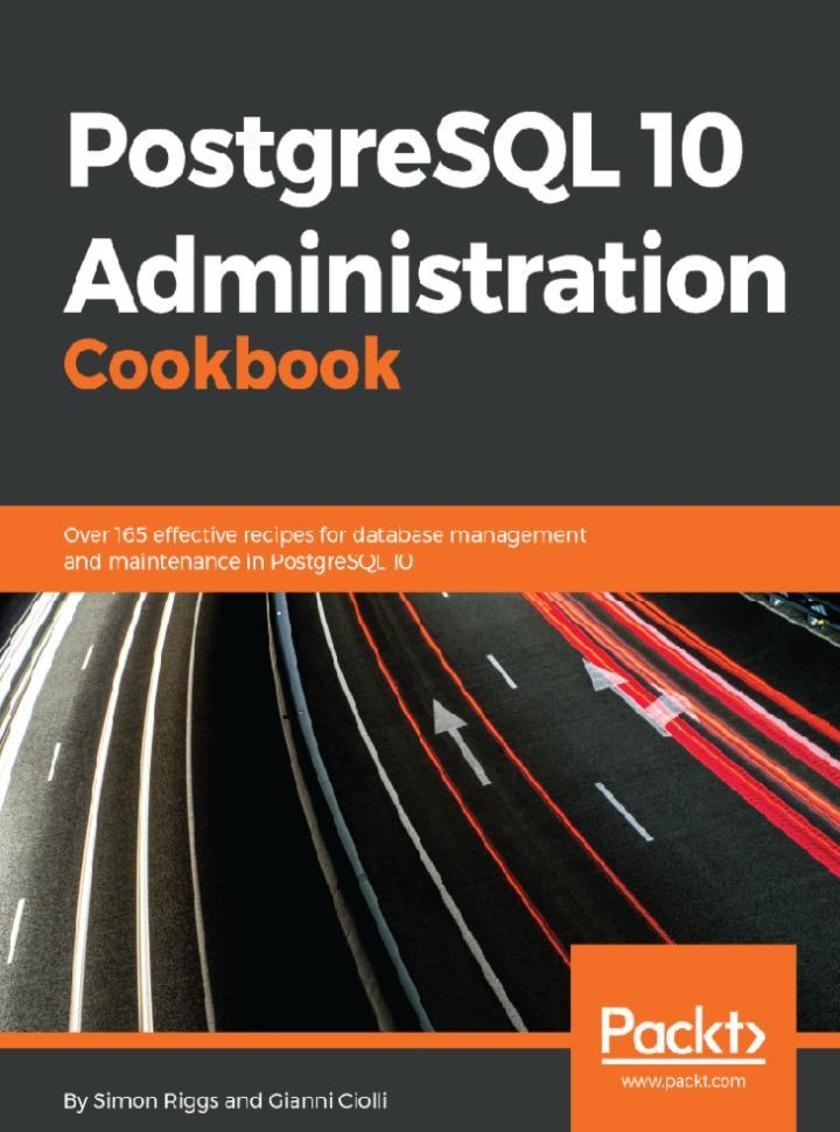
PostgreSQL 10 Administration Cookbook
¥90.46
A practical guide to administer, monitor and replicate your PostgreSQL 10 database About This Book ? Get to grips with the capabilities of PostgreSQL 10 to administer your database more efficiently ? Monitor, tune, secure and protect your database for optimal performance ? A step-by-step, recipe-based guide to help you tackle any problem in PostgreSQL 10 administration with ease Who This Book Is For This book is for database administrators, data architects, developers, or anyone with an interest in planning for, or running, live production databases using PostgreSQL. It is most suited to those looking for hands-on solutions to any problem associated with PostgreSQL administration. What You Will Learn ? Get to grips with the newly released PostgreSQL 10 features to improve database performance and reliability ? Manage open source PostgreSQL versions 10 on various platforms. ? Explore best practices for planning and designing live databases ? Select and implement robust backup and recovery techniques in PostgreSQL 10 ? Explore concise and clear guidance on replication and high availability ? Discover advanced technical tips for experienced users In Detail PostgreSQL is a powerful, open source database management system with an enviable reputation for high performance and stability. With many new features in its arsenal, PostgreSQL 10 allows users to scale up their PostgreSQL infrastructure. This book takes a step-by-step, recipe-based approach to effective PostgreSQL administration. Throughout this book, you will be introduced to these new features such as logical replication, native table partitioning, additional query parallelism, and much more. You will learn how to tackle a variety of problems that are basically the pain points for any database administrator - from creating tables to managing views, from improving performance to securing your database. More importantly, the book pays special attention to topics such as monitoring roles, backup, and recovery of your PostgreSQL 10 database, ensuring high availability, concurrency, and replication. By the end of this book, you will know everything you need to know to be the go-to PostgreSQL expert in your organization. Style and approach The book is a step by step guide with example-driven recipes, focused on the new features of the latest PostgreSQL version10. This book will serve as a specific guide to understand and leverage useful PostgreSQL functionalities to create better and more efficient databases.
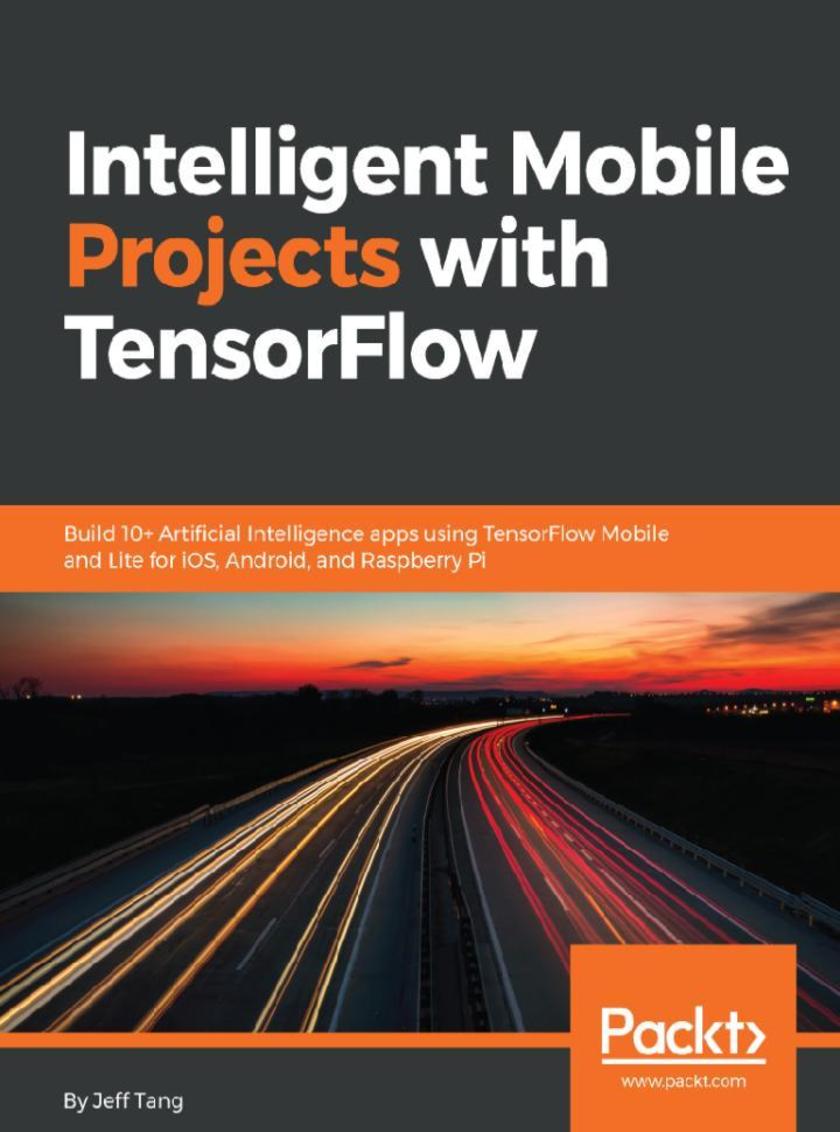
Intelligent Mobile Projects with TensorFlow
¥90.46
Create Deep Learning and Reinforcement Learning apps for multiple platforms with TensorFlow About This Book ? Build TensorFlow-powered AI applications for mobile and embedded devices ? Learn modern AI topics such as computer vision, NLP, and deep reinforcement learning ? Get practical insights and exclusive working code not available in the TensorFlow documentation Who This Book Is For If you're an iOS/Android developer interested in building and retraining others' TensorFlow models and running them in your mobile apps, or if you're a TensorFlow developer and want to run your new and amazing TensorFlow models on mobile devices, this book is for you. You'll also benefit from this book if you're interested in TensorFlow Lite, Core ML, or TensorFlow on Raspberry Pi. What You Will Learn ? Classify images with transfer learning ? Detect objects and their locations ? Transform pictures with amazing art styles ? Understand simple speech commands ? Describe images in natural language ? Recognize drawing with Convolutional Neural Network and Long Short-Term Memory ? Predict stock price with Recurrent Neural Network in TensorFlow and Keras ? Generate and enhance images with generative adversarial networks ? Build AlphaZero-like mobile game app in TensorFlow and Keras ? Use TensorFlow Lite and Core ML on mobile ? Develop TensorFlow apps on Raspberry Pi that can move, see, listen, speak, and learn In Detail As a developer, you always need to keep an eye out and be ready for what will be trending soon, while also focusing on what's trending currently. So, what's better than learning about the integration of the best of both worlds, the present and the future? Artificial Intelligence (AI) is widely regarded as the next big thing after mobile, and Google's TensorFlow is the leading open source machine learning framework, the hottest branch of AI. This book covers more than 10 complete iOS, Android, and Raspberry Pi apps powered by TensorFlow and built from scratch, running all kinds of cool TensorFlow models offline on-device: from computer vision, speech and language processing to generative adversarial networks and AlphaZero-like deep reinforcement learning. You’ll learn how to use or retrain existing TensorFlow models, build your own models, and develop intelligent mobile apps running those TensorFlow models. You'll learn how to quickly build such apps with step-by-step tutorials and how to avoid many pitfalls in the process with lots of hard-earned troubleshooting tips. Style and approach This book takes a practical, project-based approach to teach specifics of mobile development with TensorFlow. Using a reader-friendly approach, this book will provide detailed instructions and also discuss the broader context covered within.
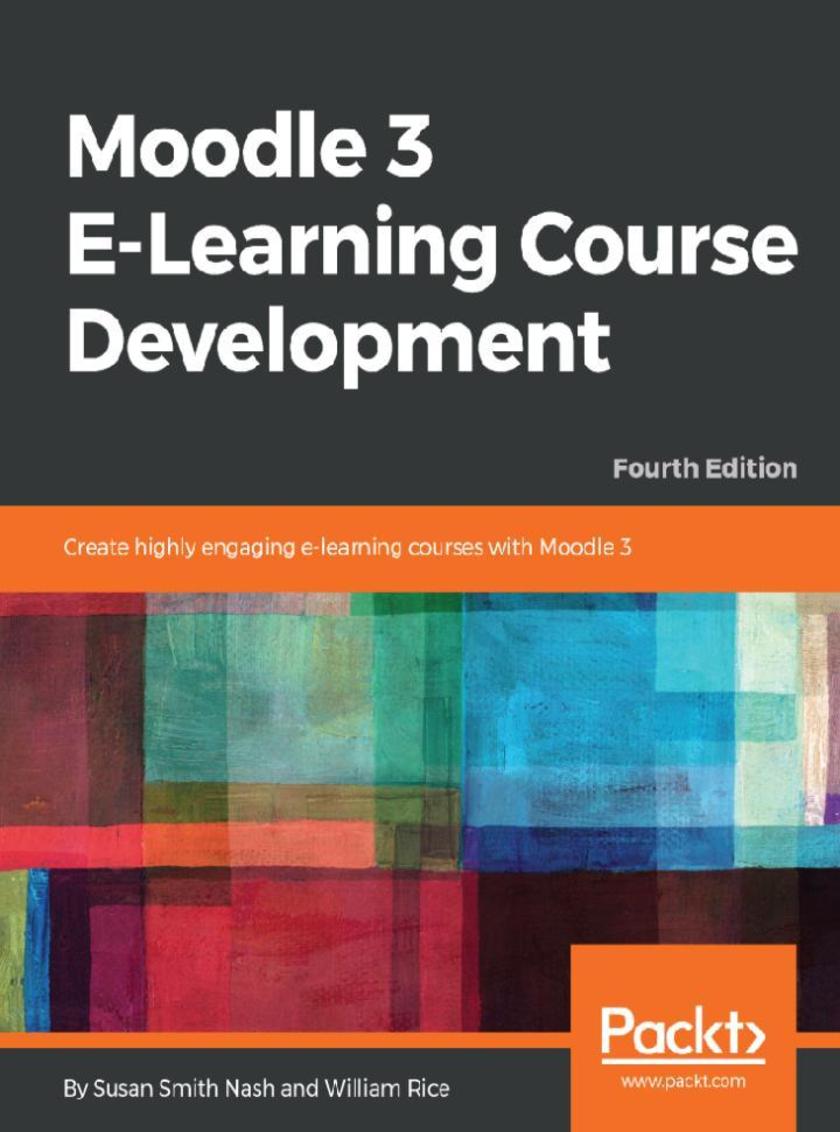
Moodle 3 E-Learning Course Development
¥90.46
A complete guide on course development and delivery using Moodle 3.x About This Book ? Get the best out of the latest Moodle 3 framework to ensure successful learning ? Gain experience in creating different kinds of courses ? Create your first Moodle VR app using the Moodle VR toolset Who This Book Is For This book is for anyone who wants to get the best out of Moodle. As a beginner, this is a thorough guide for you to understand how the software works, with great ideas for getting off to a good start with your first course. Some experience of working with e-learning systems will be beneficial. Experienced Moodle users will find powerful insights into developing successful and educational courses. What You Will Learn ? Know what Moodle does and how it supports your teaching strategies ? Install Moodle on your computer and navigate your way around it ? Understand all of Moodle's learning features ? Monitor how learners interact with your site using site statistics ? Add multimedia content to your site ? Allow students to enroll themselves or invite other students to join a course In Detail Moodle is a learning platform or Course Management System (CMS) that is easy to install and use, but the real challenge is in developing a learning process that leverages its power and maps the learning objectives to content and assessments for an integrated and effective course. Moodle 3 E-Learning Course Development guides you through meeting that challenge in a practical way. This latest edition will show you how to add static learning material, assessments, and social features such as forum-based instructional strategy, a chat module, and forums to your courses so that students reach their learning potential. Whether you want to support traditional class teaching or lecturing, or provide complete online and distance e-learning courses, this book will prove to be a powerful resource throughout your use of Moodle. You’ll learn how to create and integrate third-party plugins and widgets in your Moodle app, implement site permissions and user accounts, and ensure the security of content and test papers. Further on, you’ll implement PHP scripts that will help you create customized UIs for your app. You’ll also understand how to create your first Moodle VR e-learning app using the latest VR learning experience that Moodle 3 has to offer. By the end of this book, you will have explored the decisions, design considerations, and thought processes that go into developing a successful course. Style and approach Packed with clear step-by-step instructions, plenty of screenshots, and thorough explanations, this book guides you through the many features and options that you have to choose from when using Moodle 3.
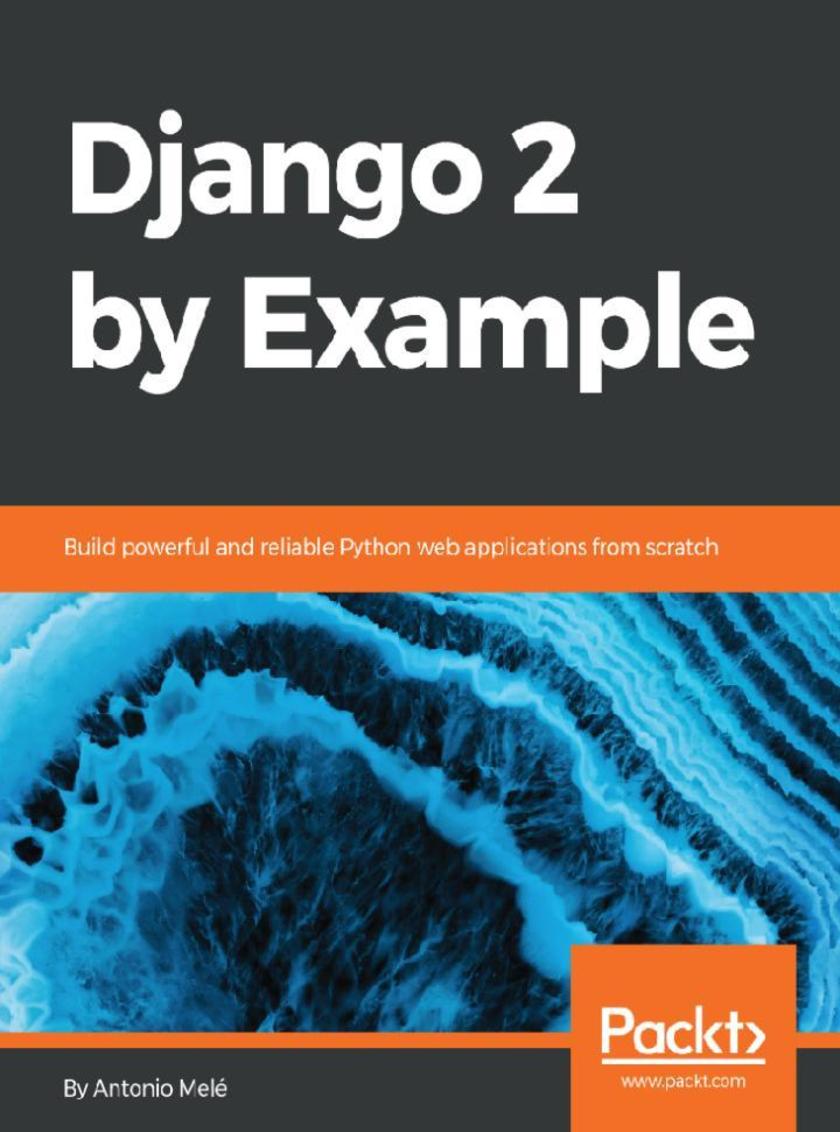
Django 2 by Example
¥90.46
Learn Django 2.0 with four end-to-end projects About This Book ? Learn Django by building real-world web applications from scratch ? Develop powerful web applications quickly using the best coding practices ? Integrate other technologies into your application with clear, step-by-step explanations and comprehensive example code Who This Book Is For If you are a web developer who wants to see how to build professional sites with Django, this book is for you. You will need a basic knowledge of Python, HTML, and JavaScript, but you don't need to have worked with Django before. What You Will Learn ? Build practical, real-world web applications with Django ? Use Django with other technologies, such as Redis and Celery ? Develop pluggable Django applications ? Create advanced features, optimize your code, and use the cache framework ? Add internationalization to your Django projects ? Enhance your user experience using JavaScript and AJAX ? Add social features to your projects ? Build RESTful APIs for your applications In Detail If you want to learn about the entire process of developing professional web applications with Django, then this book is for you. This book will walk you through the creation of four professional Django projects, teaching you how to solve common problems and implement best practices. You will learn how to build a blog application, a social image-bookmarking website, an online shop, and an e-learning platform. The book will teach you how to enhance your applications with AJAX, create RESTful APIs, and set up a production environment for your Django projects. The book walks you through the creation of real-world applications, while solving common problems and implementing best practices. By the end of this book, you will have a deep understanding of Django and how to build advanced web applications Style and approach This easy-to-follow guide takes you through the process of building four different production-ready Django projects with a simple step-by-step approach.
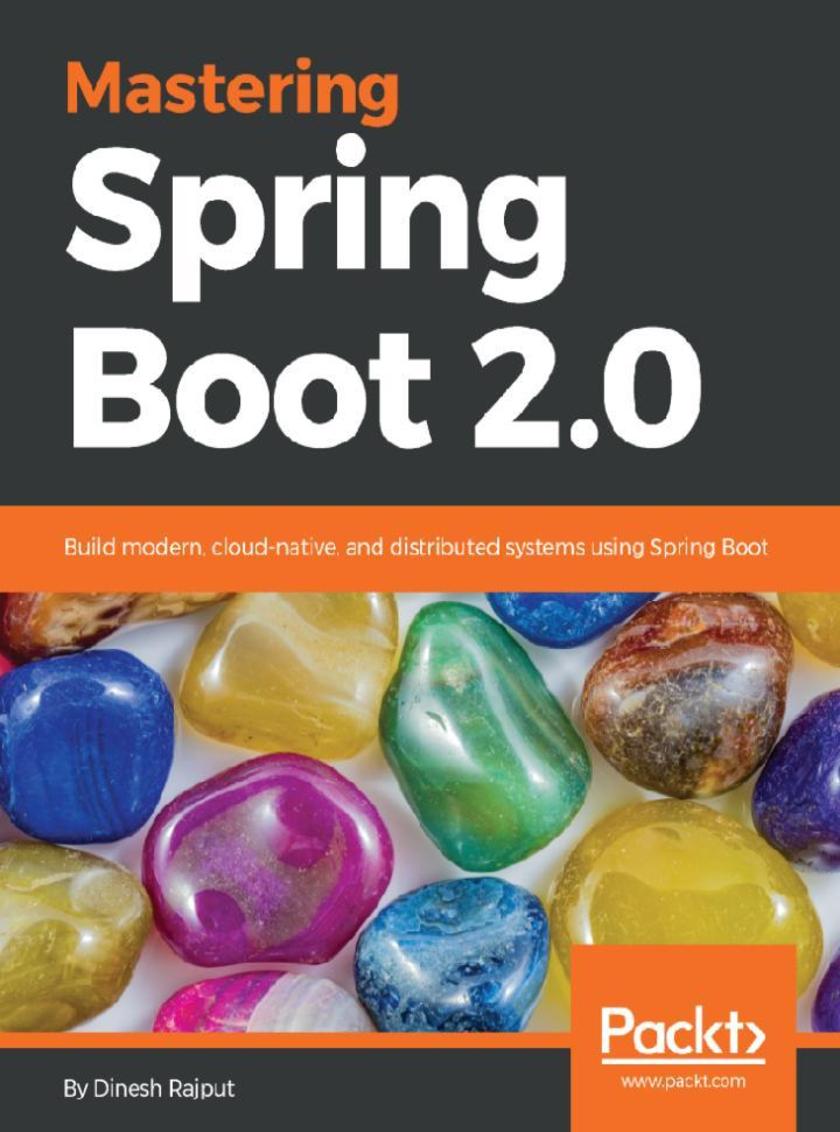
Mastering Spring Boot 2.0
¥90.46
Learn to develop, test, and deploy your Spring Boot distributed application and explore various best practices. About This Book ? Build and deploy your microservices architecture in the cloud ? Build event-driven resilient systems using Hystrix and Turbine ? Explore API management tools such as KONG and API documentation tools such as Swagger Who This Book Is For The book is targeted at experienced Spring and Java developers who have a basic knowledge of working with Spring Boot. The reader should be familiar with Spring Boot basics, and aware of its benefits over traditional Spring Framework-based applications. What You Will Learn ? Build logically structured and highly maintainable Spring Boot applications ? Configure RESTful microservices using Spring Boot ? Make the application production and operation-friendly with Spring Actuator ? Build modern, high-performance distributed applications using cloud patterns ? Manage and deploy your Spring Boot application to the cloud (AWS) ? Monitor distributed applications using log aggregation and ELK In Detail Spring is one of the best frameworks on the market for developing web, enterprise, and cloud ready software. Spring Boot simplifies the building of complex software dramatically by reducing the amount of boilerplate code, and by providing production-ready features and a simple deployment model. This book will address the challenges related to power that come with Spring Boot's great configurability and flexibility. You will understand how Spring Boot configuration works under the hood, how to overwrite default configurations, and how to use advanced techniques to prepare Spring Boot applications to work in production. This book will also introduce readers to a relatively new topic in the Spring ecosystem – cloud native patterns, reactive programming, and applications. Get up to speed with microservices with Spring Boot and Spring Cloud. Each chapter aims to solve a specific problem or teach you a useful skillset. By the end of this book, you will be proficient in building and deploying your Spring Boot application. Style and approach The book takes a practical, example-driven approach to teaching you all the advanced features of Spring Boot 2.0
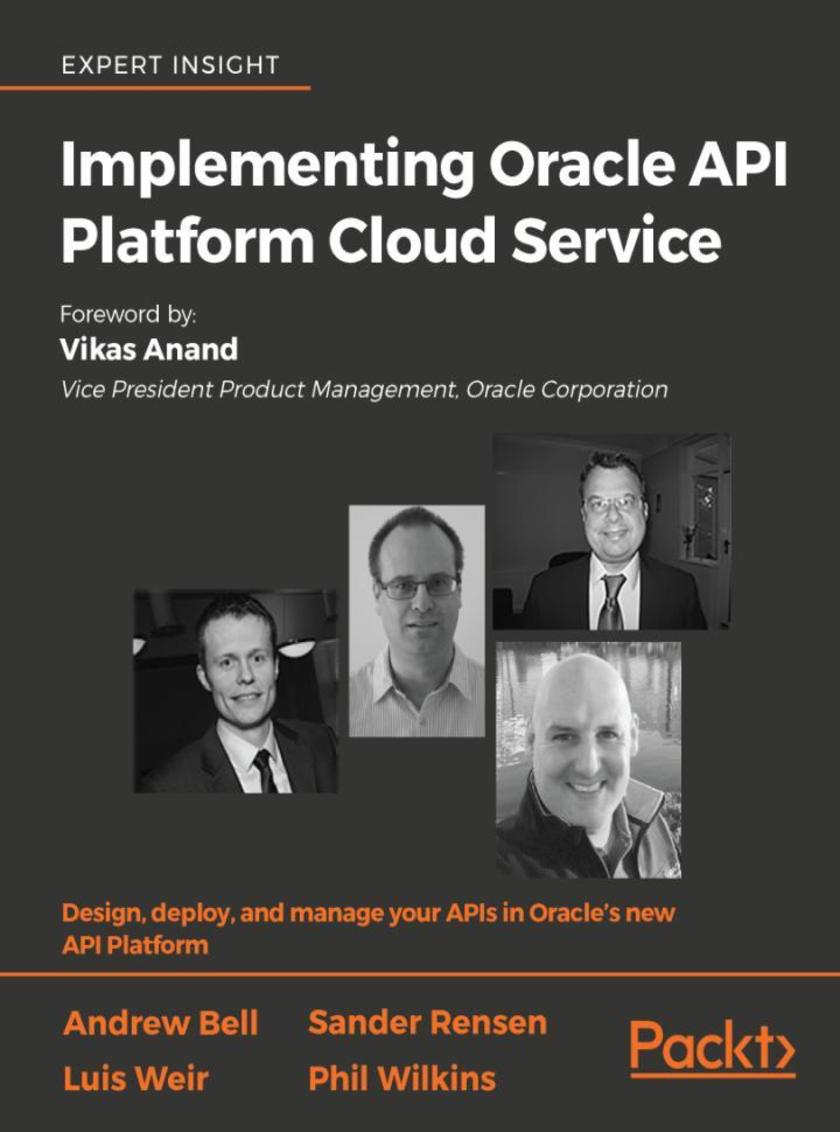
Implementing Oracle API Platform Cloud Service
¥90.46
Work with the newest Oracle API Platform Cloud Service to interface with the increasingly complex array of services your clients want. About This Book ? Understand the architecture and functionality of the new Oracle API Cloud Service Platform ? Understand typical use cases for the new platform and how it can work for you ? Design your own APIs, then deploy and customize your APIs ? Implement Oauth 2.0 policy and custom policies ? Migrate from Oracle 12c solutions to the new Oracle API platform Who This Book Is For This book is for all Oracle developers who are working or plan to work with the Oracle API Platform Cloud Service. What You Will Learn ? Get an overview of the Oracle API Cloud Service Platform ? See typical use cases of the Oracle API Cloud Service Platform ? Design your own APIs using Apiary ? Build and run microservices ? Set up API gateways with the new API platform from Oracle ? Customize developer portals ? Configuration management ? Implement Oauth 2.0 policies ? Implement custom policies ? Get a policy SDK overview ? Transition from Oracle API Management 12c to the new Oracle API platform In Detail Implementing Oracle API Platform Cloud Service moves from theory to practice using the newest Oracle API management platform. This critical new platform for Oracle developers allows you to interface the complex array of services your clients expect in the modern world. First, you'll learn about Oracle’s new platform and get an overview of it, then you'll see a use case showing the functionality and use of this new platform for Oracle customers. Next, you’ll see the power of Apiary and begin designing your own APIs. From there, you’ll build and run microservices and set up the Oracle API gateways. Moving on, you’ll discover how to customize the developer portal and publish your own APIs. You’ll spend time looking at configuration management on the new platform, and implementing the Oauth 2.0 policy, as well as custom policies. The latest finance modules from Oracle will be examined, with some of the third party alternatives in sight as well. This broad-scoped book completes your journey with a clear examination of how to transition APIs from Oracle API Management 12c to the new Oracle API Platform, so that you can step into the future confidently. Style and approach This book provides comprehensive coverage of all aspects of Oracle API development using the new Oracle API Platform Cloud Service. All aspects of the new Oracle API Platform Cloud Service are considered and your practical, working Oracle situations are examined to give you have hands-on experience using the new API platform from Oracle.
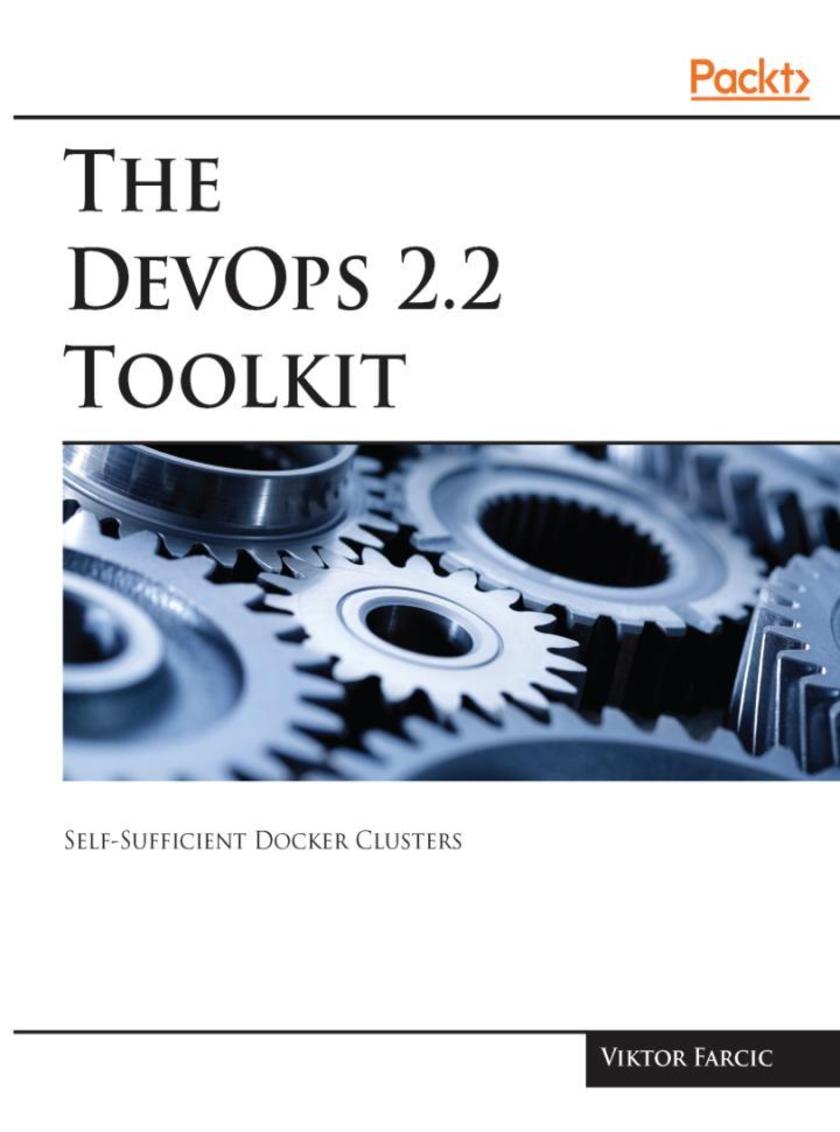
The DevOps 2.2 Toolkit
¥90.46
Learn from an expert on how use self-adapting and self-healing systems within Docker. About This Book ? Viktor Farcic shows you all aspects in the creation of self-adapting and self-healing systems in both a practical and hands-on approach. ? Learn how to choose a successful solution for metrics storage and query, including InfluxDB, Nagios and Sensu, Prometheus and Graphite. ? Discover how to integrate Docker Flow Monitor with Docker Flow Proxy. ? How to apply Docker self-healing and self-adaptive to both services and infrastructure. Who This Book Is For This book is for professionals experienced with Docker looking to create both self-adapting and self-healing systems using the software. What You Will Learn ? Let Viktor Farcic show you all aspects in the creation of self-adapting and self-healing systems in both a practical and hands-on approach. ? Learn how to choose a successful solution for metrics storage and query, including InfluxDB, Nagios and Sensu, Prometheus and Graphite. ? Understand how to integrate Docker Flow Monitor with Docker Flow Proxy. ? The creation of cluster-wide alerts by creating alerts based on metrics. ? How to apply self-healing and self-adaptive to both services and infrastructure. In Detail Building on The DevOps 2.0 Toolkit and The DevOps 2.1 Toolkit: Docker Swarm, Viktor Farcic brings his latest exploration of the Docker technology as he records his journey to explore two new programs, self-adaptive and self-healing systems within Docker. The DevOps 2.2 Toolkit: Self-Sufficient Docker Clusters is the latest book in Viktor Farcic’s series that helps you build a full DevOps Toolkit. This book in the series looks at Docker, the tool designed to make it easier in the creation and running of applications using containers. In this latest entry, Viktor combines theory with a hands-on approach to guide you through the process of creating self-adaptive and self-healing systems. Within this book, Viktor will cover a wide-range of emerging topics, including what exactly self-adaptive and self-healing systems are, how to choose a solution for metrics storage and query, the creation of cluster-wide alerts and what a successful self-sufficient system blueprint looks like. Work with Viktor and dive into the creation of self-adaptive and self-healing systems within Docker. Style and approach Readers join Viktor Farcic as he continues his exploration of Docker and begins to explore new opportunities with the platform.
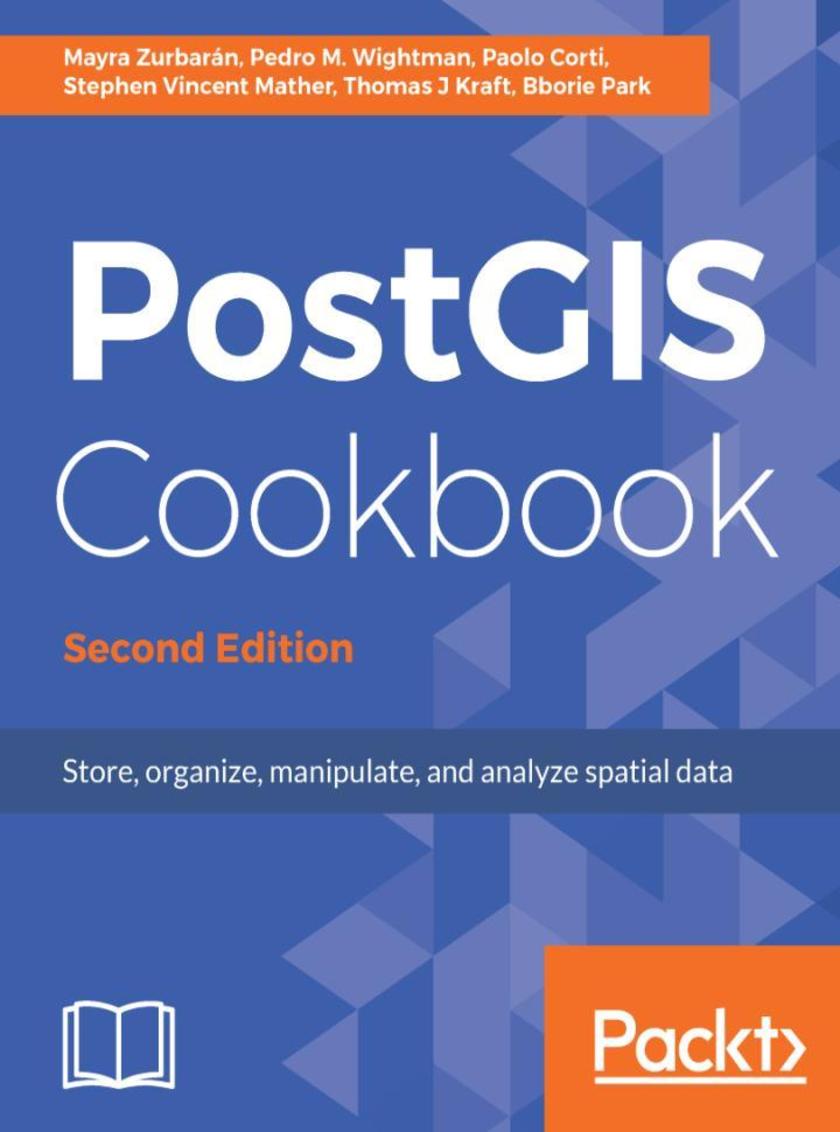
PostGIS Cookbook - Second Edition
¥90.46
Create and manage spatial data with PostGIS About This Book ? Import and export geographic data from the PostGIS database using the available tools ? Maintain, optimize, and fine-tune spatial data for long-term viability ? Utilize the parallel support functionality that was introduced in PostgreSQL 9.6 Who This Book Is For This book is for developers who need some quick solutions for PostGIS. Prior knowledge of PostgreSQL and spatial concepts would be an added advantage. What You Will Learn ? Import and export geographic data from the PostGIS database using the available tools ? Structure spatial data using the functionality provided by a combination of PostgreSQL and PostGIS ? Work with a set of PostGIS functions to perform basic and advanced vector analyses ? Connect PostGIS with Python ? Learn to use programming frameworks around PostGIS ? Maintain, optimize, and fine-tune spatial data for long-term viability ? Explore the 3D capabilities of PostGIS, including LiDAR point clouds and point clouds derived from Structure from Motion (SfM) techniques ? Distribute 3D models through the Web using the X3D standard ? Use PostGIS to develop powerful GIS web applications using Open Geospatial Consortium web standards ? Master PostGIS Raster In Detail PostGIS is a spatial database that integrates the advanced storage and analysis of vector and raster data, and is remarkably flexible and powerful. PostGIS provides support for geographic objects to the PostgreSQL object-relational database and is currently the most popular open source spatial databases. If you want to explore the complete range of PostGIS techniques and expose related extensions, then this book is for you. This book is a comprehensive guide to PostGIS tools and concepts which are required to manage, manipulate, and analyze spatial data in PostGIS. It covers key spatial data manipulation tasks, explaining not only how each task is performed, but also why. It provides practical guidance allowing you to safely take advantage of the advanced technology in PostGIS in order to simplify your spatial database administration tasks. Furthermore, you will learn to take advantage of basic and advanced vector, raster, and routing approaches along with the concepts of data maintenance, optimization, and performance, and will help you to integrate these into a large ecosystem of desktop and web tools. By the end, you will be armed with all the tools and instructions you need to both manage the spatial database system and make better decisions as your project's requirements evolve. Style and approach This comprehensive guide uses a problem-solving approach to help you acquire a solid understanding of PostGIS.
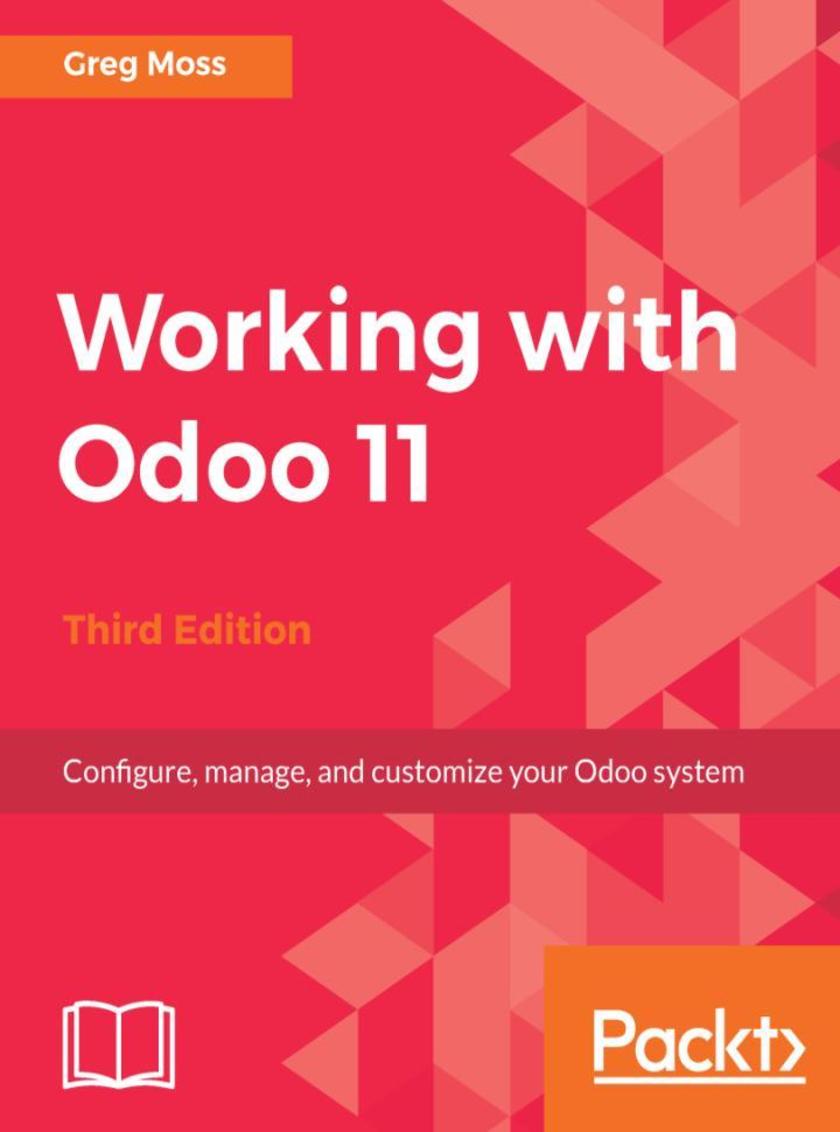
Working with Odoo 11 - Third Edition
¥90.46
Transform and modernize your businesses and upgrade your enterprise management skills with Odoo 11, the most comprehensive management software About This Book ? Use project management along with analytics for better reporting ? Build an Odoo module and integrate it with other platforms with this practical guide ? Explore new design and mobile updates from the Odoo enterprise Who This Book Is For This book is for beginners, and will help you learn advanced-level features with Odoo such as creating your own custom modules. You do not need any prior knowledge of Odoo. What You Will Learn ? Configure a functioning customer relationship management system ? Set up a purchasing and receiving system ? Implement manufacturing operations and processes using real-world examples ? Discover the capabilities of Odoo's financial accounting and reporting features ? Integrate powerful human resource applications ? Utilize Odoo's project management application to organize tasks ? Customize Odoo without writing a line of code In Detail Odoo is an all-in-one management software that offers an array of business applications, forming a complete suite of enterprise management applications. Odoo 11 comes with advances on usability, speed, and design. Working with Odoo 11 starts with how to set up Odoo, both online and on your own server. You’ll then configure the basic company settings required to quickly get your first Odoo system up and running. Later, you’ll explore customer relationship management in Odoo and its importance in a modern business environment. You'll then dive into purchasing applications with Odoo, learn some of the primary functionalities of ERP systems for manufacturing operations, and use analytic accounting to provide better reporting. After that, you'll learn how to work with Odoo for mobile, and finally, you will walk through the recent Odoo 11 features with respect to the community and enterprise edition, giving you a complete understanding of what Odoo can do for your business. Style and approach A guide to learning the advanced features of Odoo 11, to enable customization of Odoo modules to suite ones' business needs.
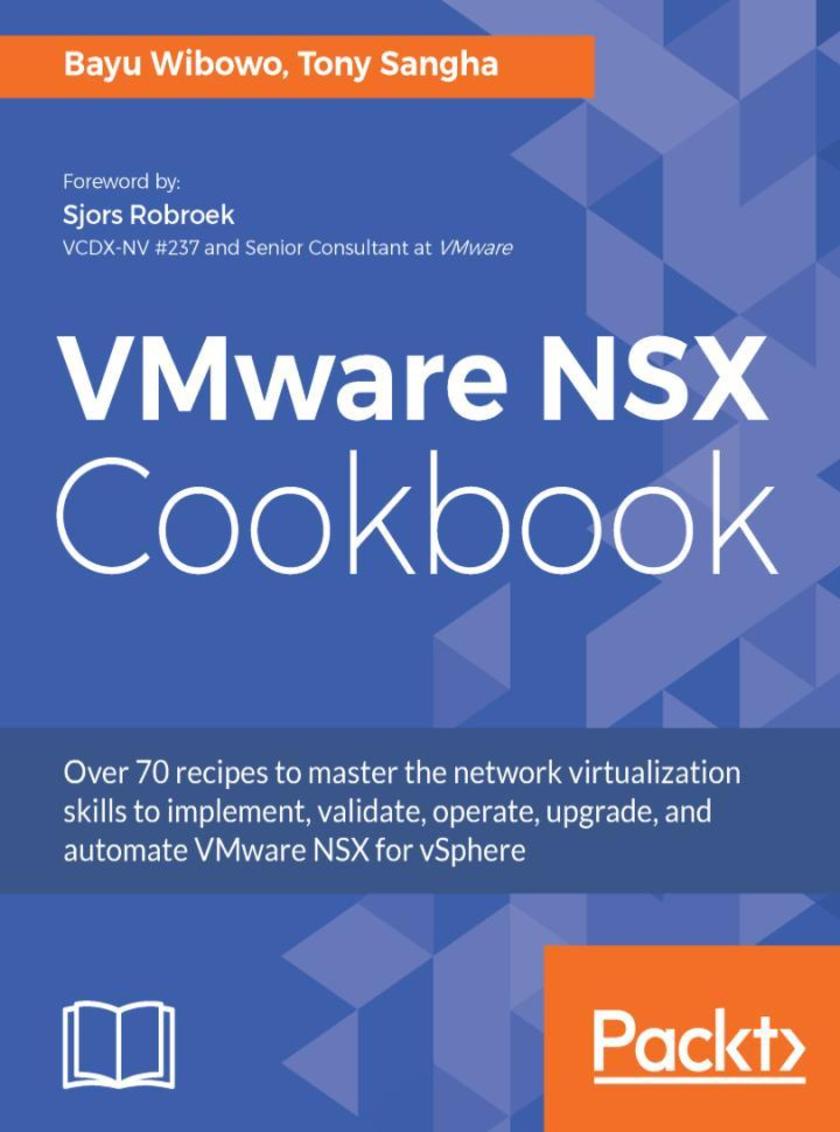
VMware NSX Cookbook
¥90.46
Network virtualization at your fingertips About This Book ? Over 70 practical recipes created by two VCIX-NV certified NSX experts ? Explore best practices to deploy, operate, and upgrade VMware NSX for vSphere ? Leverage NSX REST API using various tools from Python in VMware vRealize Orchestrator Who This Book Is For If you are a security and network administrator and looking to gain an intermediate level for network and security virtualization, then this book is for you. The reader should have a basic knowledge with VMware NSX. What You Will Learn ? Understand, install, and configure VMware NSX for vSphere solutions ? Configure logical switching, routing, and Edge Services Gateway in VMware NSX for vSphere ? Learn how to plan and upgrade VMware NSX for vSphere ? Learn how to use built-in monitoring tools such as Flow Monitoring, Traceflow, Application Rule Manager, and Endpoint Monitoring ? Learn how to leverage the NSX REST API for management and automation using various tools from Python to VMware vRealize Orchestrator In Detail This book begins with a brief introduction to VMware's NSX for vSphere Network Virtualization solutions and how to deploy and configure NSX components and features such as Logical Switching, Logical Routing, layer 2 bridging and the Edge Services Gateway. Moving on to security, the book shows you how to enable micro-segmentation through NSX Distributed Firewall and Identity Firewall and how to do service insertion via network and guest introspection. After covering all the feature configurations for single-site deployment, the focus then shifts to multi-site setups using Cross-vCenter NSX. Next, the book covers management, backing up and restoring, upgrading, and monitoring using built-in NSX features such as Flow Monitoring, Traceflow, Application Rule Manager, and Endpoint Monitoring. Towards the end, you will explore how to leverage VMware NSX REST API using various tools from Python to VMware vRealize Orchestrator. Style and approach The book follows a practical, recipe-based approach and teaches readers how to leverage VMware NSX and implement these recipes directly into their enterprise.
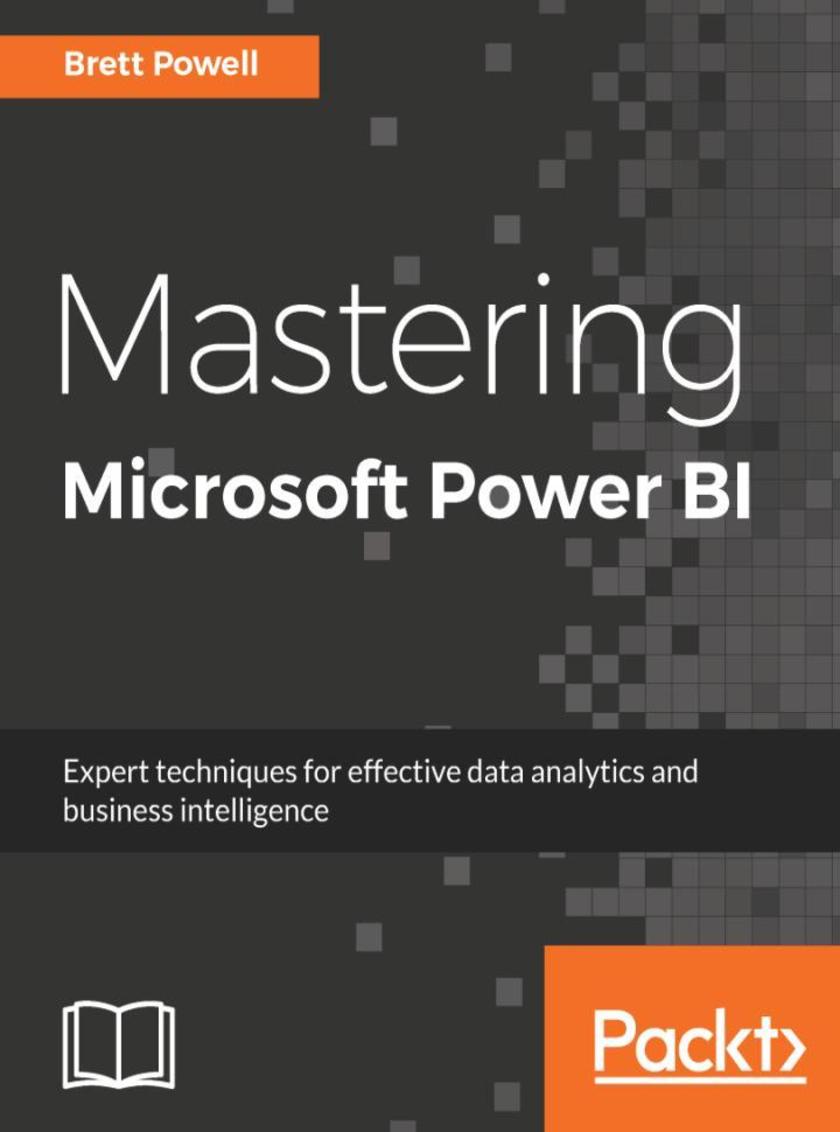
Mastering Microsoft Power BI
¥90.46
Design, create and manage robust Power BI solutions to gain meaningful business insights About This Book ? Master all the dashboarding and reporting features of Microsoft Power BI ? Combine data from multiple sources, create stunning visualizations and publish your reports across multiple platforms ? A comprehensive guide with real-world use cases and examples demonstrating how you can get the best out of Microsoft Power BI Who This Book Is For Business Intelligence professionals and existing Power BI users looking to master Power BI for all their data visualization and dashboarding needs will find this book to be useful. While understanding of the basic BI concepts is required, some exposure to Microsoft Power BI will be helpful. What You Will Learn ? Build efficient data retrieval and transformation processes with the Power Query M Language ? Design scalable, user-friendly DirectQuery and Import Data Models ? Develop visually rich, immersive, and interactive reports and dashboards ? Maintain version control and stage deployments across development, test, and production environments ? Manage and monitor the Power BI Service and the On-premises data gateway ? Develop a fully on-premise solution with the Power BI Report Server ? Scale up a Power BI solution via Power BI Premium capacity and migration to Azure Analysis Services or SQL Server Analysis Services In Detail This book is intended for business intelligence professionals responsible for the design and development of Power BI content as well as managers, architects and administrators who oversee Power BI projects and deployments. The chapters flow from the planning of a Power BI project through the development and distribution of content to the administration of Power BI for an organization. BI developers will learn how to create sustainable and impactful Power BI datasets, reports, and dashboards. This includes connecting to data sources, shaping and enhancing source data, and developing an analytical data model. Additionally, top report and dashboard design practices are described using features such as Bookmarks and the Power KPI visual. BI managers will learn how Power BI’s tools work together such as with the On-premises data gateway and how content can be staged and securely distributed via Apps. Additionally, both the Power BI Report Server and Power BI Premium are reviewed. By the end of this book, you will be confident in creating effective charts, tables, reports or dashboards for any kind of data using the tools and techniques in Microsoft PowerBI. Style and approach This book consists of real-world examples on Power BI that target novices as well as intermediate Power BI users. It goes deep into the technical issues, covers additional protocols, and many more real-live examples.
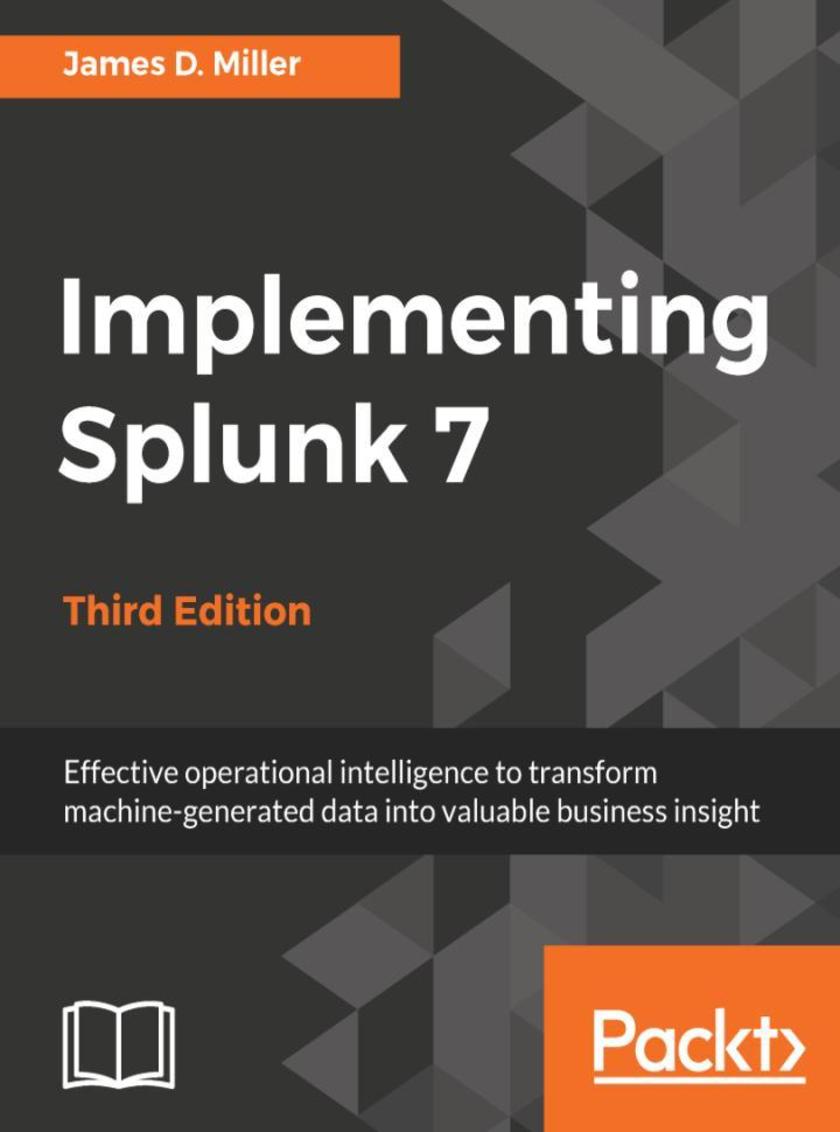
Implementing Splunk 7 - Third Edition
¥90.46
A comprehensive guide to making machine data accessible across the organization using advanced dashboards About This Book ? Enrich machine-generated data and transform it into useful, meaningful insights ? Perform search operations and configurations, build dashboards, and manage logs ? Extend Splunk services with scripts and advanced configurations to process optimal results Who This Book Is For This book is intended for data analysts, business analysts, and IT administrators who want to make the best use of big data, operational intelligence, log management, and monitoring within their organization. Some knowledge of Splunk services will help you get the most out of the book What You Will Learn ? Focus on the new features of the latest version of Splunk Enterprise 7 ? Master the new offerings in Splunk: Splunk Cloud and the Machine Learning Toolkit ? Create efficient and effective searches within the organization ? Master the use of Splunk tables, charts, and graph enhancements ? Use Splunk data models and pivots with faster data model acceleration ? Master all aspects of Splunk XML dashboards with hands-on applications ? Create and deploy advanced Splunk dashboards to share valuable business insights with peers In Detail Splunk is the leading platform that fosters an efficient methodology and delivers ways to search, monitor, and analyze growing amounts of big data. This book will allow you to implement new services and utilize them to quickly and efficiently process machine-generated big data. We introduce you to all the new features, improvements, and offerings of Splunk 7. We cover the new modules of Splunk: Splunk Cloud and the Machine Learning Toolkit to ease data usage. Furthermore, you will learn to use search terms effectively with Boolean and grouping operators. You will learn not only how to modify your search to make your searches fast but also how to use wildcards efficiently. Later you will learn how to use stats to aggregate values, a chart to turn data, and a time chart to show values over time; you'll also work with fields and chart enhancements and learn how to create a data model with faster data model acceleration. Once this is done, you will learn about XML Dashboards, working with apps, building advanced dashboards, configuring and extending Splunk, advanced deployments, and more. Finally, we teach you how to use the Machine Learning Toolkit and best practices and tips to help you implement Splunk services effectively and efficiently. By the end of this book, you will have learned about the Splunk software as a whole and implemented Splunk services in your tasks at projects Style and approach An easy-to-follow, step-by-step guide to help you get to grips with real-world applications of Splunk 7.
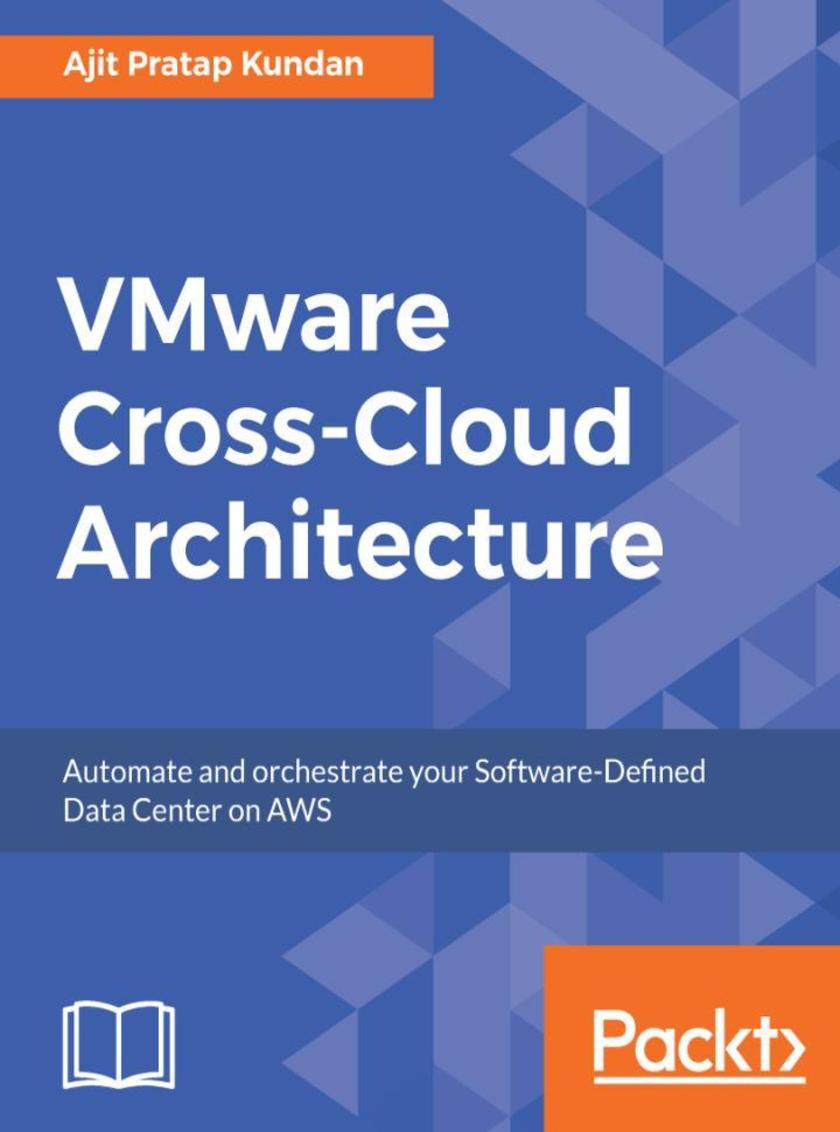
VMware Cross-Cloud Architecture
¥90.46
Enhance your virtualization skills by mastering storage and network virtualization with automation across different Clouds About This Book ? Migrate and build your applications in Hybrid Cloud with VMware Cross Cloud components and services ? Gain in-depth configuration insights of VMware Cross Cloud architecture ? Learn to migrate applications from VMware to AWS and IBM Cloud Who This Book Is For This book is for administrators, Cloud architects and network engineers who want to globalize their infrastructure using VMware and AWS services. An initial setup of workloads and data center is beneficial. What You Will Learn ? Install and configure the Cloud foundation with Cross-Cloud services ? Configure vSphere high availability with the vCenter redundancy setup ? Architect and configure VMware with AWS Cloud ? Deploy VMware components in IBM Soft Layer ? Extend your DR setup with VMware to consume DRaaS ? Design and configure software-defined networking ? Implement compliance regulations to fix violations In Detail Over the past two decades, VMware vSphere has been known as the most trusted and reliable virtualization platform. VMware Cross-Cloud Architecture shows you how to design and configure Cross Cloud Architecture by using VMware Cloud Foundation and vRealize Suite with various use cases across private, public, and hybrid Cloud. This book takes you through everything from a basic understanding of virtualization to advanced aspects of storage and network virtualization, clustering, automation, and management. This book will be your guide to designing all aspects of Cloud. We start with the challenges faced by a traditional data center, define problem statements for you, and then brief you on respective solutions. Moving on, all kinds of virtualization and Cloud offerings from AWS and IBM Soft Layer are introduced and discussed in detail. Then, you'll learn how to design IT infrastructures for new and existing applications with a combination of Cloud Foundation, vRealize Suite, and vSphere enabled with VSAN and NSX. Furthermore, you'll learn how to design and configure high availability, disaster recovery, and apply an appropriate compliance matrix. Toward the end of the book, you will learn how to calculate the TCO/ROI, along with the VMware products packaging and licensing in detail. Style and approach This book follows a step-by-step, practical approach which will help you to have a better understanding of the cloud technology and the steps required to quickly reap its benefits while at the same time lowering your IT implementation risk and cost.
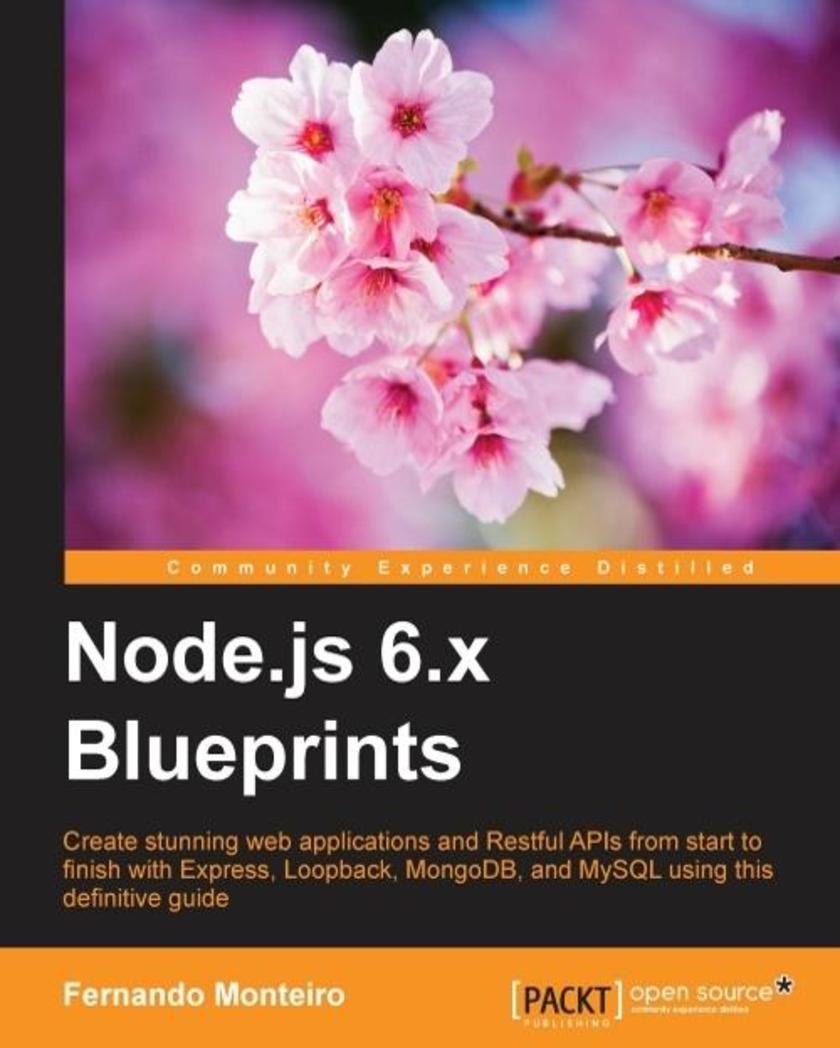
Node.js 6.x Blueprints
¥90.46
Create stunning web applications and Restful APIs from start to finish with Express, Loopback, MongoDB, and MySQL using this definitive guide About This Book Create stunning applications with Node.js from scratch, no matter the goal Discover a wide variety of applications you can effectively integrate third-party libraries and other front-end frameworks with Node.js Leverage all the new features introduced in Node.js 6.X Who This Book Is For This book caters to developers who are looking to build projects right from a simple website to more complex one such as a blog, chat application, a photography site, and a lot more. A Basic knowledge of JavaScript and Node.js would be extremely beneficial. What You Will Learn Explore MVC design pattern in Node.js Build solid architectures by following test-driven development Look beyond web applications and create your own desktop app with Node.js Develop single page applications using Node.js with the RESTful APIs, MongoDB, and ORM Master the Express framework and build a complete application with a real database Create a real-time and fully functional online chat application with Socket.IO In Detail Node.js is the most popular framework to create server-side applications today. Be it web, desktop, or mobile, Node.js comes to your rescue to create stunning real-time applications. Node.js 6.x Blueprints will teach you to build these types of projects in an easy-to-understand manner. The key to any Node.js project is a strong foundation on the concepts that will be a part of every project. The book will first teach you the MVC design pattern while developing a Twitter-like application using Express.js. In the next chapters, you will learn to create a website and applications such as streaming, photography, and a store locator using MongoDB, MySQL, and Firebase. Once you’re warmed up, we’ll move on to more complex projects such as a consumer feedback app, a real-time chat app, and a blog using Node.js with frameworks such as loopback.io and socket.io. Finally, we’ll explore front-end build processes, Docker, and continuous delivery. By the end of book, you will be comfortable working with Node.js applications and will know the best tools and frameworks to build highly scalable desktop and cloud applications. Style and approach This is an easy-to-follow guide full of practical examples. This book takes a project-based approach and each chapter contains step-by-step instructions to create stunning applications across different application domains from scratch.
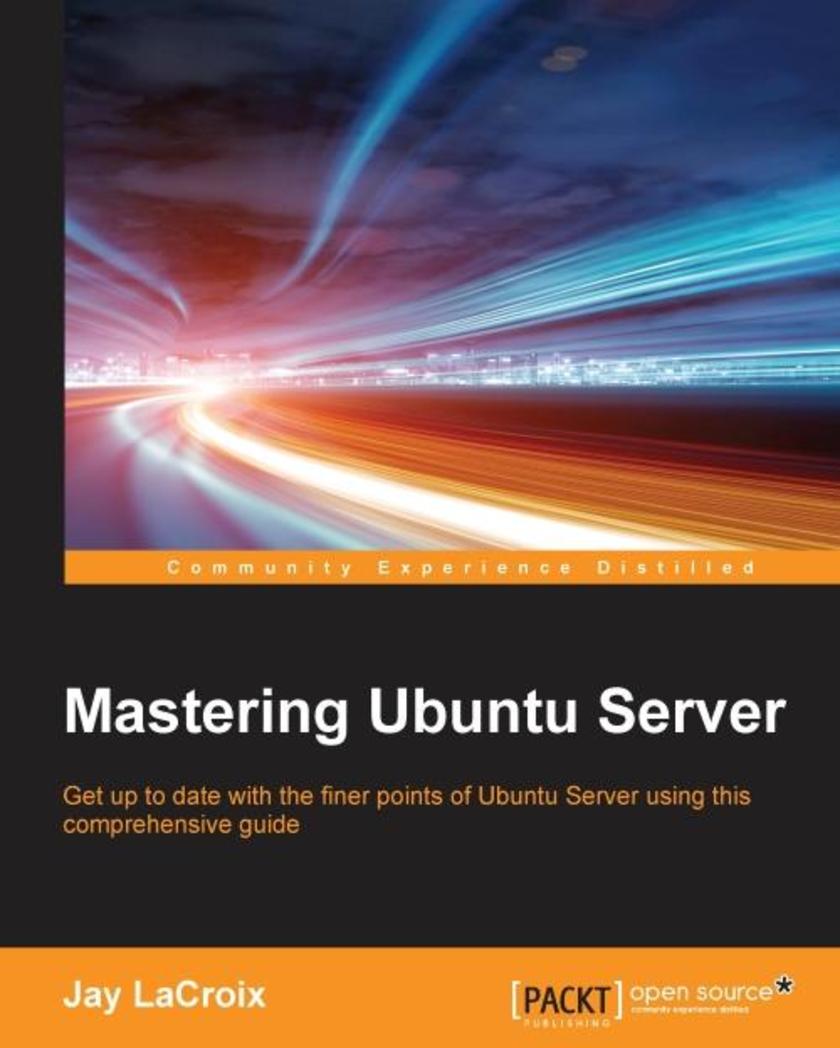
Mastering Ubuntu Server
¥90.46
Get up to date with the finer points of Ubuntu Server using this comprehensive guide About This Book Get well-versed with newly-added features in Ubuntu 16.04 Master the art of installing, managing, and troubleshooting Ubuntu Server A practical easy-to-understand book that will help you enhance your existing skills. Who This Book Is For This book is intended for readers with intermediate or advanced-beginner skills with Linux, who would like to learn all about setting up servers with Ubuntu Server. This book assumes that the reader knows the basics of Linux, such as editing configuration files and running basic commands. What You Will Learn Learn how to manage users, groups, and permissions Encrypt and decrypt disks with Linux Unified Key Setup /Luks Setup SSH for remote access, and connect it to other nodes Understand how to add, remove, and search for packages Use NFS and Samba to share directories with other users Get to know techniques for managing Apache and MariaDB Explore best practices and troubleshooting techniques In Detail Ubuntu is a Debian-based Linux operating system, and has various versions targeted at servers, desktops, phones, tablets and televisions. The Ubuntu Server Edition, also called Ubuntu Server, offers support for several common configurations, and also simplifies common Linux server deployment processes. With this book as their guide, readers will be able to configure and deploy Ubuntu Servers using Ubuntu Server 16.04, with all the skills necessary to manage real servers. The book begins with the concept of user management, group management, as well as file-system permissions. To manage your storage on Ubuntu Server systems, you will learn how to add and format storage and view disk usage. Later, you will also learn how to configure network interfaces, manage IP addresses, deploy Network Manager in order to connect to networks, and manage network interfaces. Furthermore, you will understand how to start and stop services so that you can manage running processes on Linux servers. The book will then demonstrate how to access and share files to or from Ubuntu Servers. You will learn how to create and manage databases using MariaDB and share web content with Apache. To virtualize hosts and applications, you will be shown how to set up KVM/Qemu and Docker and manage virtual machines with virt-manager. Lastly, you will explore best practices and troubleshooting techniques when working with Ubuntu Servers. By the end of the book, you will be an expert Ubuntu Server user well-versed in its advanced concepts. Style and Approach This book is an advanced guide that will show readers how to administer, manage, and deploy Ubuntu server and will also provide expert-level knowledge on advanced security and backup techniques.
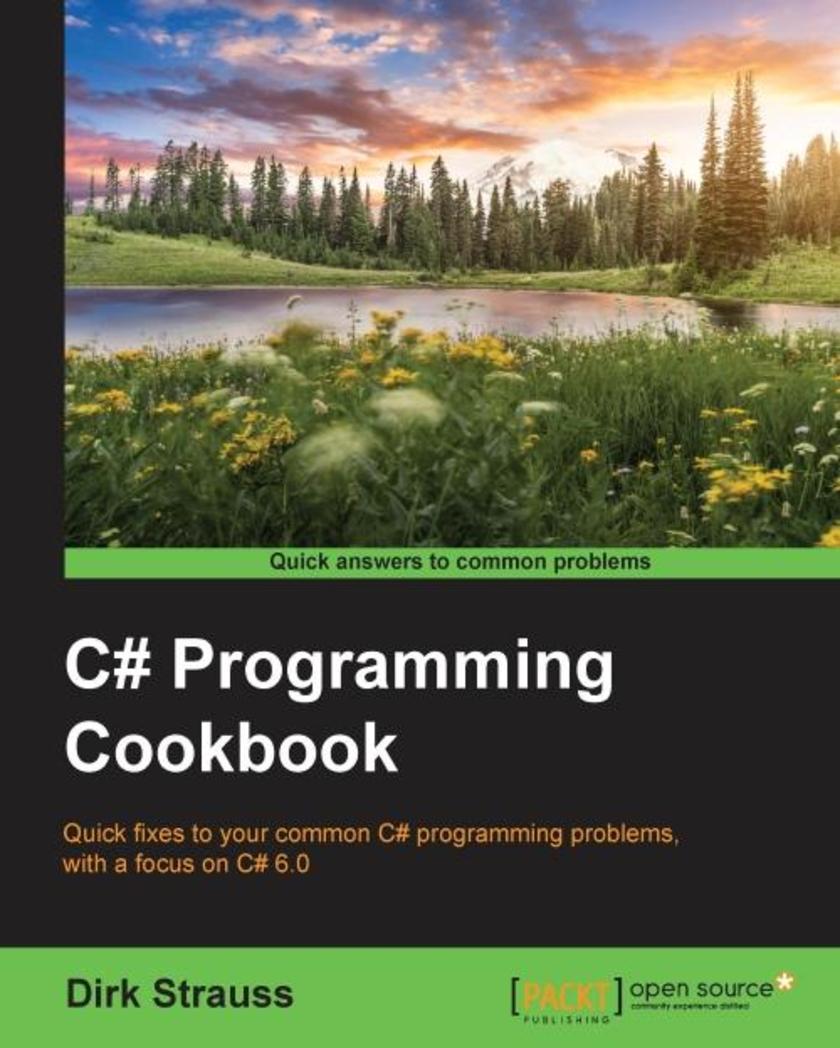
C# Programming Cookbook
¥90.46
Quick fixes to your common C# programming problems, with a focus on C# 6.0 About This Book Unique recipes for C#, that places it in its real-world context. You will be able to get yourself out of any coding-corner youve backed yourself into. All code samples available through GitHub to bring C#. In line with modern development workflows, written to the latest specification of C# 6.0. Who This Book Is For The book is aimed at developers who have basic familiarity with C# programming and will know the VS 2015 environment. What You Will Learn Write better and less code to achieve the same result as in previous versions of C#. Generate tests from the Code Contracts for mission critical methods. Integrate code in Visual Studio with GitHub. Create a web application in Azure. Design and build a microservice architecture Demystify the Rx library using Reactive extensions Write high performing codes in C# and understanding multi-threading. Security and Debugging. Implement Code Contracts on code in Visual Studio. In Detail During your application development workflow, there is always a moment when you need to get out of a tight spot. Through a recipe-based approach, this book will help you overcome common programming problems and get your applications ready to face the modern world. We start with C# 6, giving you hands-on experience with the new language features. Next, we work through the tasks that you perform on a daily basis such as working with strings, generics, and lots more. Gradually, we move on to more advanced topics such as the concept of object-oriented programming, asynchronous programming, reactive extensions, and code contracts. You will learn responsive high performance programming in C# and how to create applications with Azure. Next, we will review the choices available when choosing a source control solution. At the end of the book, we will show you how to create secure and robust code, and will help you ramp up your skills when using the new version of C# 6 and Visual Studio Style and Approach Unique recipe-based guide that will help you gain a solid understanding of the new concepts in C# 6 and Visual Studio Enterprise 2015 in a concise and technically correct manner.
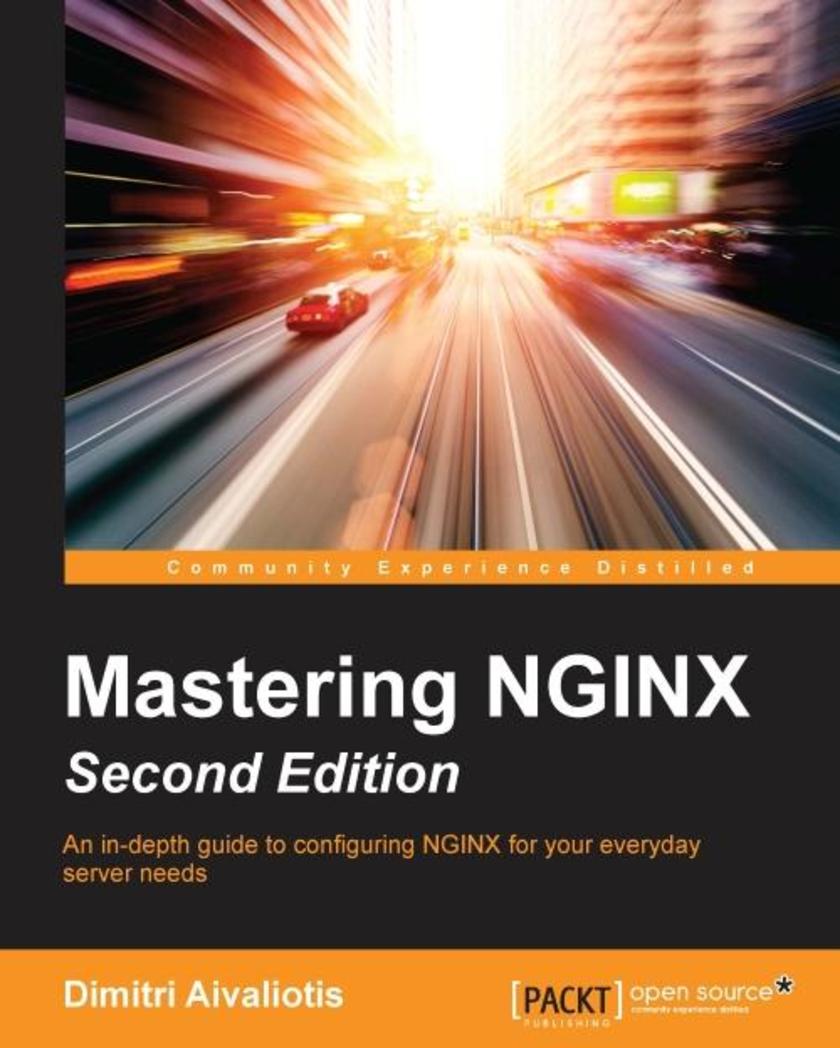
Mastering NGINX - Second Edition
¥90.46
An in-depth guide to configuring NGINX for your everyday server needs About This Book Get tips, tricks, and master insight to help you configure NGINX for any server situation Integrate NGINX into your applications architecture with is, using hands-on guidance and practical code samples that are free to use Troubleshoot configuration problems before and as they arise, for a seamless NGINX server experience Who This Book Is For This book is for system administrators and engineers who want to personalize NGINX, and design a robust configuration module to solve their hosting problems. Some knowledge of NGINX is a plus, but is not a prerequisite. What You Will Learn Compile the right third-party module to meet your needs Write an authentication server to use with the mail proxy module Create your own SSL certificates to encrypt connections Use try_files to solve your file-existence check problems Cache and compress responses to get speedier user interaction Integrate popular PHP frameworks with the FastCGI module Construct useful logging configurations In Detail NGINX is a high-performance HTTP server and mail proxy designed to use very few system resources. But despite its power it is often a challenge to properly configure NGINX to meet your expectations. Mastering Nginx is the solution – an insider’s guide that will clarify the murky waters of NGINX’s configuration. Tune NGINX for various situations, improve your NGINX experience with some of the more obscure configuration directives, and discover how to design and personalize a configuration to match your needs. To begin with, quickly brush up on installing and setting up the NGINX server on the OS and its integration with third-party modules. From here, move on to explain NGINX's mail proxy module and its authentication, and reverse proxy to solve scaling issues. Then see how to integrate NGINX with your applications to perform tasks. The latter part of the book focuses on working through techniques to solve common web issues and the know-hows using NGINX modules. Finally, we will also explore different configurations that will help you troubleshoot NGINX server and assist with performance tuning. Style and approach This is a mastering guide where you will follow an instructional, conversational approach working through problems and their solutions.
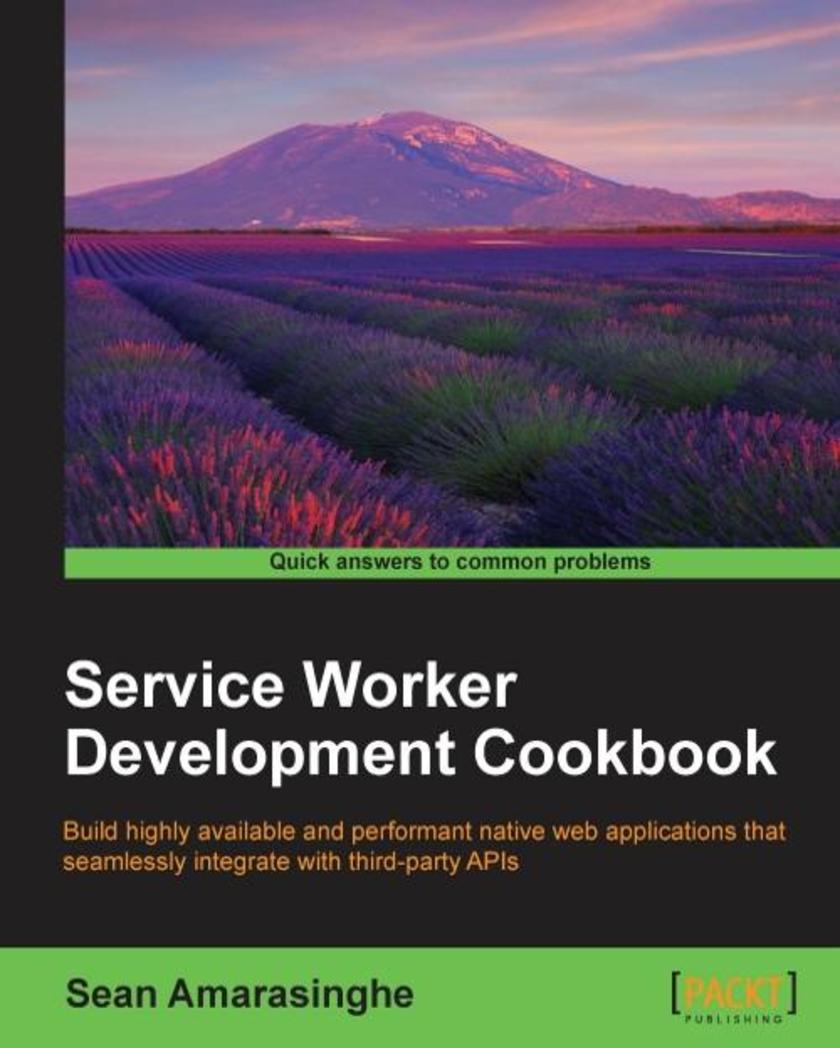
Service Worker Development Cookbook
¥90.46
Build highly available and performant native web applications that seamlessly integrate with third-party APIs About This Book Get straight into the action with step-by-step recipes that show you how to put Service Workers to work Find out what Service Workers can do for your app, then do it! Get the first in-depth look at this important new feature for web developers Who This Book Is For Web developers, mobile application developers, and software engineers with any level of knowledge can use this book. You should be familiar with JavaScript and HTML. What You Will Learn Display a custom offline page Cache critical resources for offline use Implement offline Google Analytics Get network responses offline Implement push notifications Improve performance of your app In Detail It would be nice to have web apps that work offline and send push notifications. This is now possible with Service Workers, which can add native-like functionality to your web apps without requiring a download. This book will get your mobile and web apps functioning without Internet connectivity, improve performance and network interaction in order to increase the level of availability, and show you how to build performant applications that seamlessly integrate with third-party APIs. We’ll show you how to add Service Worker functionality to web apps and sites, access offline content through basic and advanced techniques, and build powerful interactive system notifications. We’ll also teach you about cache functionality and assets to provide immediate load even over narrow connections. We conclude by giving you various tips to improve app performance, including the background sync technique. By the end of this book, you’ll know build high performing and faster web and mobile applications with Service Workers. Style and approach This book provides lots of task-oriented, practical, and inspiring ways to put Service Workers to work. Step-by-step instructions will guide you through every task.
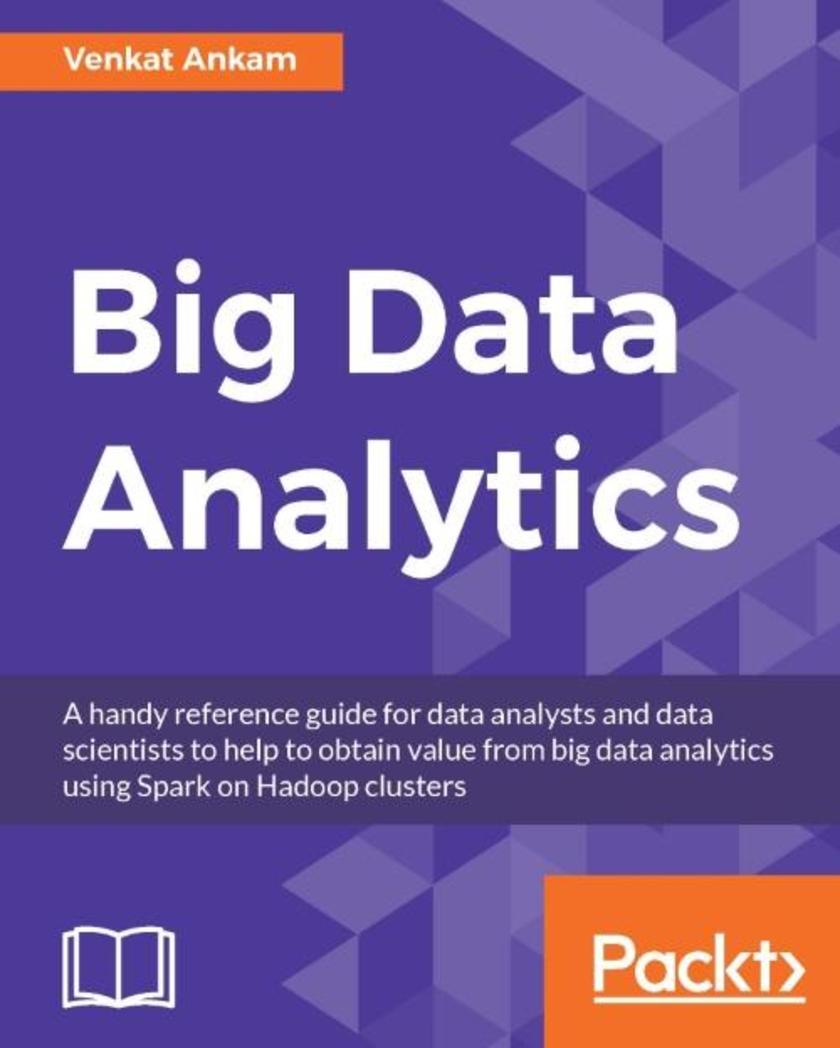
Big Data Analytics
¥90.46
A handy reference guide for data analysts and data scientists to help to obtain value from big data analytics using Spark on Hadoop clusters About This Book This book is based on the latest 2.0 version of Apache Spark and 2.7 version of Hadoop integrated with most commonly used tools. Learn all Spark stack components including latest topics such as DataFrames, DataSets, GraphFrames, Structured Streaming, DataFrame based ML Pipelines and SparkR. Integrations with frameworks such as HDFS, YARN and tools such as Jupyter, Zeppelin, NiFi, Mahout, HBase Spark Connector, GraphFrames, H2O and Hivemall. Who This Book Is For Though this book is primarily aimed at data analysts and data scientists, it will also help architects, programmers, and practitioners. Knowledge of either Spark or Hadoop would be beneficial. It is assumed that you have basic programming background in Scala, Python, SQL, or R programming with basic Linux experience. Working experience within big data environments is not mandatory. What You Will Learn Find out and implement the tools and techniques of big data analytics using Spark on Hadoop clusters with wide variety of tools used with Spark and Hadoop Understand all the Hadoop and Spark ecosystem components Get to know all the Spark components: Spark Core, Spark SQL, DataFrames, DataSets, Conventional and Structured Streaming, MLLib, ML Pipelines and Graphx See batch and real-time data analytics using Spark Core, Spark SQL, and Conventional and Structured Streaming Get to grips with data science and machine learning using MLLib, ML Pipelines, H2O, Hivemall, Graphx, SparkR and Hivemall. In Detail Big Data Analytics book aims at providing the fundamentals of Apache Spark and Hadoop. All Spark components – Spark Core, Spark SQL, DataFrames, Data sets, Conventional Streaming, Structured Streaming, MLlib, Graphx and Hadoop core components – HDFS, MapReduce and Yarn are explored in greater depth with implementation examples on Spark + Hadoop clusters. It is moving away from MapReduce to Spark. So, advantages of Spark over MapReduce are explained at great depth to reap benefits of in-memory speeds. DataFrames API, Data Sources API and new Data set API are explained for building Big Data analytical applications. Real-time data analytics using Spark Streaming with Apache Kafka and HBase is covered to help building streaming applications. New Structured streaming concept is explained with an IOT (Internet of Things) use case. Machine learning techniques are covered using MLLib, ML Pipelines and SparkR and Graph Analytics are covered with GraphX and GraphFrames components of Spark. Readers will also get an opportunity to get started with web based notebooks such as Jupyter, Apache Zeppelin and data flow tool Apache NiFi to analyze and visualize data. Style and approach This step-by-step pragmatic guide will make life easy no matter what your level of experience. You will deep dive into Apache Spark on Hadoop clusters through ample exciting real-life examples. Practical tutorial explains data science in simple terms to help programmers and data analysts get started with Data Science
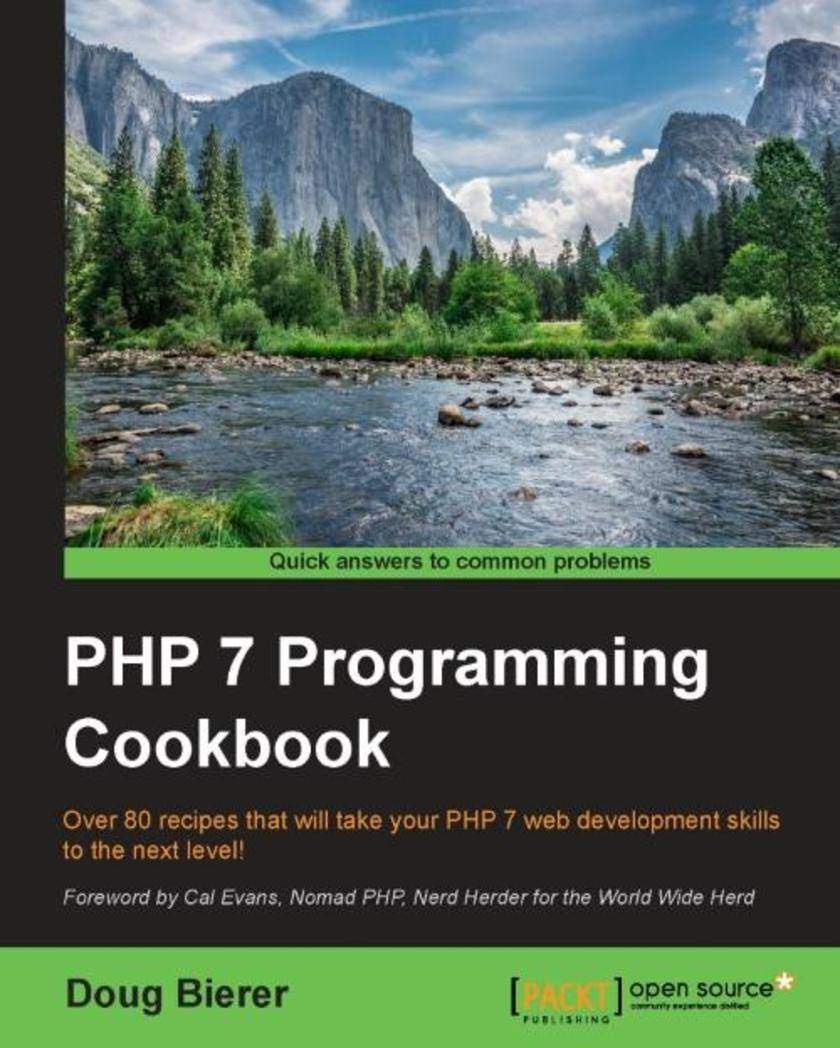
PHP 7 Programming Cookbook
¥90.46
Over 80 recipes that will take your PHP 7 web development skills to the next level! About This Book This is the most up-to-date book in the market on PHP It covers the new features of version 7.x, best practices for server-side programming, and MVC frameworks The recipe-based approach will allow you to explore the unique capabilities that PHP offers to web programmers Who This Book Is For If you are an aspiring web developer, mobile developer, or backend programmer, then this book is for you as it will take your PHP programming skills to next level. Basic knowledge of PHP programming is assumed. What You Will Learn Use advanced PHP 7 features, such as the Abstract Syntax Tree, Uniform Variable Syntax, Scalar Type Hints, Generator Delegation, Anonymous Classes, and the Context Sensitive Lexer Discover where and when PHP 5 code needs to be re-written to avoid backwards-compatibility breaks Improve the overall application security and error handling by taking advantage of classes that implement the new throwable interface Solve practical real-world programming problems using PHP 7 Develop middle-wareclasses that allow PHP developers to gluedifferent open source libraries together seamlessly Define and Implement PSR-7 classes Create custom middleware using PSR-7 compliant classes Test and debug your code, and get to know the best practices In Detail PHP 7 comes with a myriad of new features and great tools to optimize your code and make your code perform faster than in previous versions. Most importantly, it allows you to maintain high traffic on your websites with low-cost hardware and servers through a multithreading web server. This book demonstrates intermediate to advanced PHP techniques with a focus on PHP 7. Each recipe is designed to solve practical, real-world problems faced by PHP developers like yourself every day. We also cover new ways of writing PHP code made possible only in version 7. In addition, we discuss backward-compatibility breaks and give you plenty of guidance on when and where PHP 5 code needs to be changed to produce the correct results when running under PHP 7. This book also incorporates the latest PHP 7.x features. By the end of the book, you will be equipped with the tools and skills required to deliver efficient applications for your websites and enterprises. Style and approach This book takes a recipe-based approach, with real-world examples that can serve as building blocks for a larger application. Each recipe is self-contained with no external dependencies. This book follows a problem-solution strategy so you understand how to deal with various scenarios you may encounter while using PHP 7 in your daily activities.
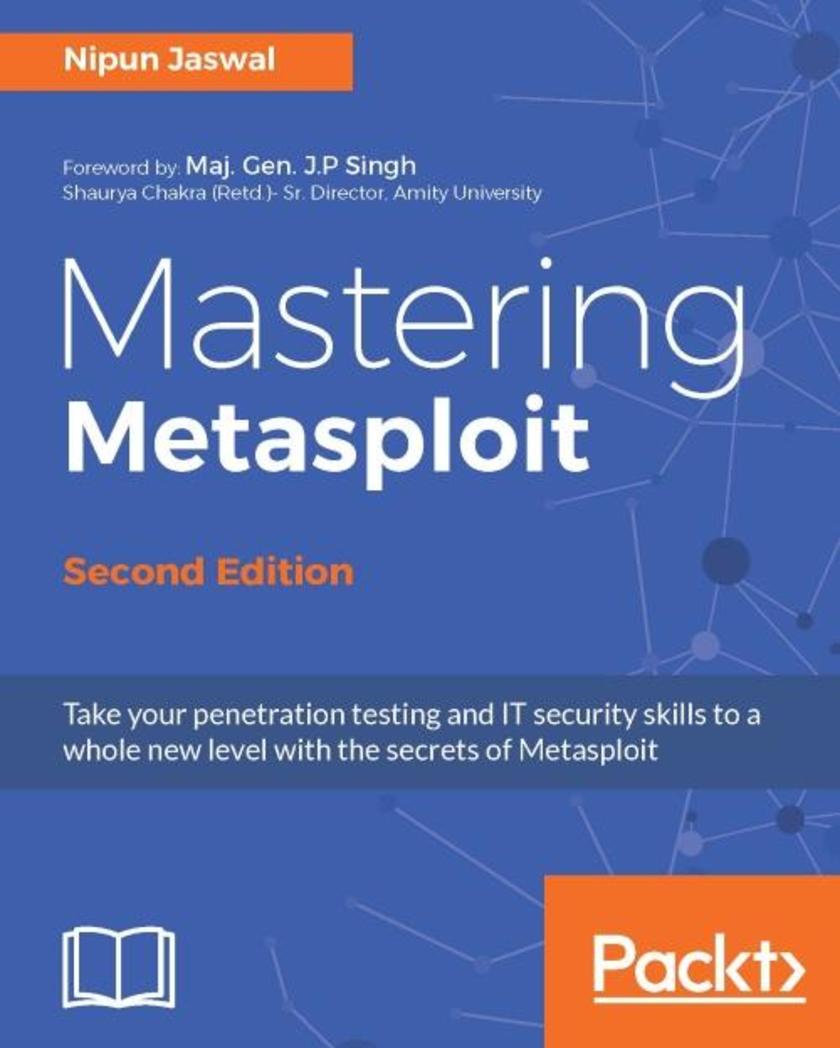
Mastering Metasploit - Second Edition
¥90.46
Take your penetration testing and IT security skills to a whole new level with the secrets of Metasploit About This Book Gain the skills to carry out penetration testing in complex and highly-secured environments Become a master using the Metasploit framework, develop exploits, and generate modules for a variety of real-world scenarios Get this completely updated edition with new useful methods and techniques to make your network robust and resilient Who This Book Is For This book is a hands-on guide to penetration testing using Metasploit and covers its complete development. It shows a number of techniques and methodologies that will help you master the Metasploit framework and explore approaches to carrying out advanced penetration testing in highly secured environments. What You Will Learn Develop advanced and sophisticated auxiliary modules Port exploits from PERL, Python, and many more programming languages Test services such as databases, SCADA, and many more Attack the client side with highly advanced techniques Test mobile and tablet devices with Metasploit Perform social engineering with Metasploit Simulate attacks on web servers and systems with Armitage GUI Script attacks in Armitage using CORTANA *ing In Detail Metasploit is a popular penetration testing framework that has one of the largest exploit databases around. This book will show you exactly how to prepare yourself against the attacks you will face every day by simulating real-world possibilities. We start by reminding you about the basic functionalities of Metasploit and its use in the most traditional ways. You’ll get to know about the basics of programming Metasploit modules as a refresher, and then dive into carrying out exploitation as well building and porting exploits of various kinds in Metasploit. In the next section, you’ll develop the ability to perform testing on various services such as SCADA, databases, IoT, mobile, tablets, and many more services. After this training, we jump into real-world sophisticated scenarios where performing penetration tests are a challenge. With real-life case studies, we take you on a journey through client-side attacks using Metasploit and various *s built on the Metasploit framework. By the end of the book, you will be trained specifically on time-saving techniques using Metasploit. Style and approach This is a step-by-step guide that provides great Metasploit framework methodologies. All the key concepts are explained details with the help of examples and demonstrations that will help you understand everything you need to know about Metasploit.




 购物车
购物车 个人中心
个人中心



